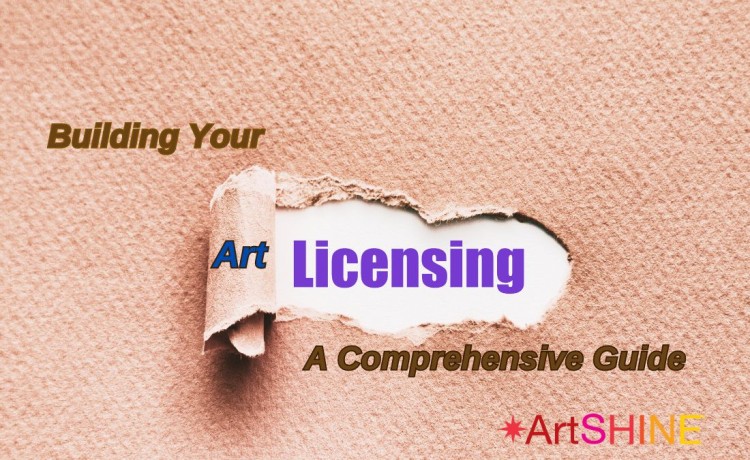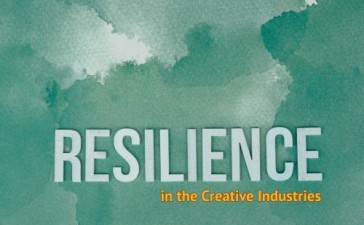Art licensing offers a unique opportunity for artists to monetize their creativity and build a sustainable career. However, success in this field requires more than just artistic talent; it demands a strategic approach, business acumen, and perseverance. This article provides a comprehensive guide on how to build a successful art licensing career, outlining key steps and considerations for aspiring licensors.
1. Develop a Diverse Portfolio
The foundation of a successful art licensing career is a robust and diverse portfolio. This showcases your range as an artist and your adaptability to different markets and product categories.
Key strategies:
- Create works in various styles and themes
- Demonstrate proficiency in different mediums
- Include designs suitable for various product types (e.g., home decor, stationery, textiles)
- Regularly update your portfolio with fresh designs
- Organize your work into cohesive collections
Remember, quantity is important, but quality should never be compromised. Aim for a portfolio of at least 50-100 high-quality designs before approaching potential licensees.
2. Research the Market
Understanding market trends and consumer preferences is crucial in art licensing. This knowledge helps you create work that is not only artistically compelling but also commercially viable.
Research methods:
- Analyze successful licensed products in stores and online
- Study trend forecasts and industry reports
- Follow industry-leading brands and designers on social media
- Attend trade shows and industry events
- Subscribe to relevant trade publications
Pay attention to color trends, popular themes, and emerging styles across different product categories. This information should inform your creative process without stifling your unique artistic voice.
3. Create Cohesive Collections
Licensees often prefer to work with collections or series of related works. This allows for a cohesive product line and makes it easier for them to envision your art across multiple products.
Tips for creating collections:
- Develop a central theme or concept
- Use a consistent color palette
- Create complementary patterns and designs
- Include both hero images and supporting artwork
- Aim for 8-12 coordinated pieces per collection
Collections not only appeal to licensees but also showcase your ability to think beyond individual designs, demonstrating your understanding of product development and marketing.
4. Understand Licensing Agreements and Royalties
A solid understanding of licensing agreements, royalties, and contract terms is essential for protecting your interests and maximizing your earnings.
Key areas to study:
- Types of licensing agreements (exclusive, non-exclusive, limited)
- Standard royalty rates for different industries
- Advance payments and guaranteed minimums
- Usage rights and limitations
- Contract duration and renewal terms
- Approval processes for product development
Consider consulting with a lawyer specializing in intellectual property or art licensing to review your contracts, especially when you’re starting out.
5. Network and Attend Trade Shows
Building relationships within the industry is crucial for success in art licensing. Networking can lead to valuable opportunities, partnerships, and insights.
Networking strategies:
- Attend industry trade shows (e.g., Surtex, Licensing Expo)
- Join professional organizations like the Licensing Industry Merchandisers’ Association (LIMA)
- Participate in online forums and social media groups for artists and licensors
- Engage with other artists and designers for mutual support and collaboration
- Follow and interact with potential licensees on social media platforms
When attending trade shows, come prepared with business cards, a professional portfolio presentation, and a confident elevator pitch about your work and brand.
6. Consider Working with an Art Licensing Agent
An experienced art licensing agent can be invaluable, especially when you’re new to the industry. They can provide guidance, connections, and negotiation expertise.
Benefits of working with an agent:
- Access to established industry relationships
- Expert negotiation of contracts and royalties
- Guidance on portfolio development and market trends
- Handling of administrative tasks, allowing you to focus on creating
- Potential for higher-value deals due to their expertise and connections
However, agents typically take a percentage of your earnings (often 30-50%). Carefully weigh the costs and benefits before deciding to work with an agent.
7. Prepare for and Learn from Rejection
Rejection is an inevitable part of the art licensing journey. How you handle and learn from rejection can significantly impact your success.
Strategies for dealing with rejection:
- View rejections as learning opportunities, not personal failures
- Ask for feedback when possible and use it to improve your work
- Analyze successful artists in your niche to understand what makes their work licensable
- Continuously refine and update your portfolio based on market responses
- Maintain a positive attitude and persistence in the face of setbacks
Remember, even established artists face rejection. It’s part of the process of finding the right fit for your work in the market.
8. Develop Your Brand and Online Presence
In today’s digital age, a strong online presence is crucial for attracting licensees and showcasing your work.
Key elements of your online presence:
- Professional website showcasing your portfolio and licensing information
- Active social media accounts (Instagram, Pinterest, LinkedIn)
- Regular blog or newsletter to engage with your audience and share your creative process
- Online portfolio platforms like Behance or ArtStation
Your online presence should reflect your unique artistic style and brand identity, making it easy for potential licensees to understand your work and its commercial potential.
9. Stay Informed and Continuously Learn
The art licensing industry is constantly evolving. Staying informed about industry trends, new technologies, and changing consumer preferences is crucial for long-term success.
Ways to stay informed:
- Attend webinars and workshops on art licensing
- Read industry blogs and publications
- Take online courses on business skills for artists
- Study successful licensing case studies
- Keep up with technological advancements in design and manufacturing
Continuous learning not only improves your skills but also demonstrates to licensees that you’re a committed and professional artist.
10. Diversify Your Income Streams
While building your art licensing career, it’s wise to diversify your income streams. This provides financial stability and can open up new opportunities.
Potential income streams:
- Selling original artwork or prints
- Teaching art classes or workshops
- Creating and selling digital products (e.g., Procreate brushes, design templates)
- Freelance design work
- Print-on-demand platforms
Diversification not only provides financial security but can also lead to unexpected opportunities in your licensing career.
Conclusion
Building a successful art licensing career is a journey that requires a combination of artistic talent, business savvy, and perseverance. By developing a diverse portfolio, understanding the market, creating cohesive collections, and navigating the business aspects of licensing, you can position yourself for success in this rewarding field.
Remember, success rarely comes overnight. It’s a process of continuous learning, adapting, and growing. Stay committed to your artistic vision while remaining flexible and open to market demands. With patience, persistence, and a strategic approach, you can build a thriving and sustainable career in art licensing, turning your creative passion into a profitable business.
- Find out more
- Launch Pad + Accelerator Expressions of Interest
- Selling and Licensing Your Art & Designs Around the World with ArtSHINE.
- Looking for exciting new Art and Designs to license.
We’re here to help you to take action, just like we’ve helped thousands of other entrepreneurs, business owners, and creative professionals all around the globe.
Now is the time to let your passion SHINE.
Now is the time to Make Tomorrow Today!
To your success, Vinh Van Lam and Stuart Horrex Cofounders ArtSHINE.com





